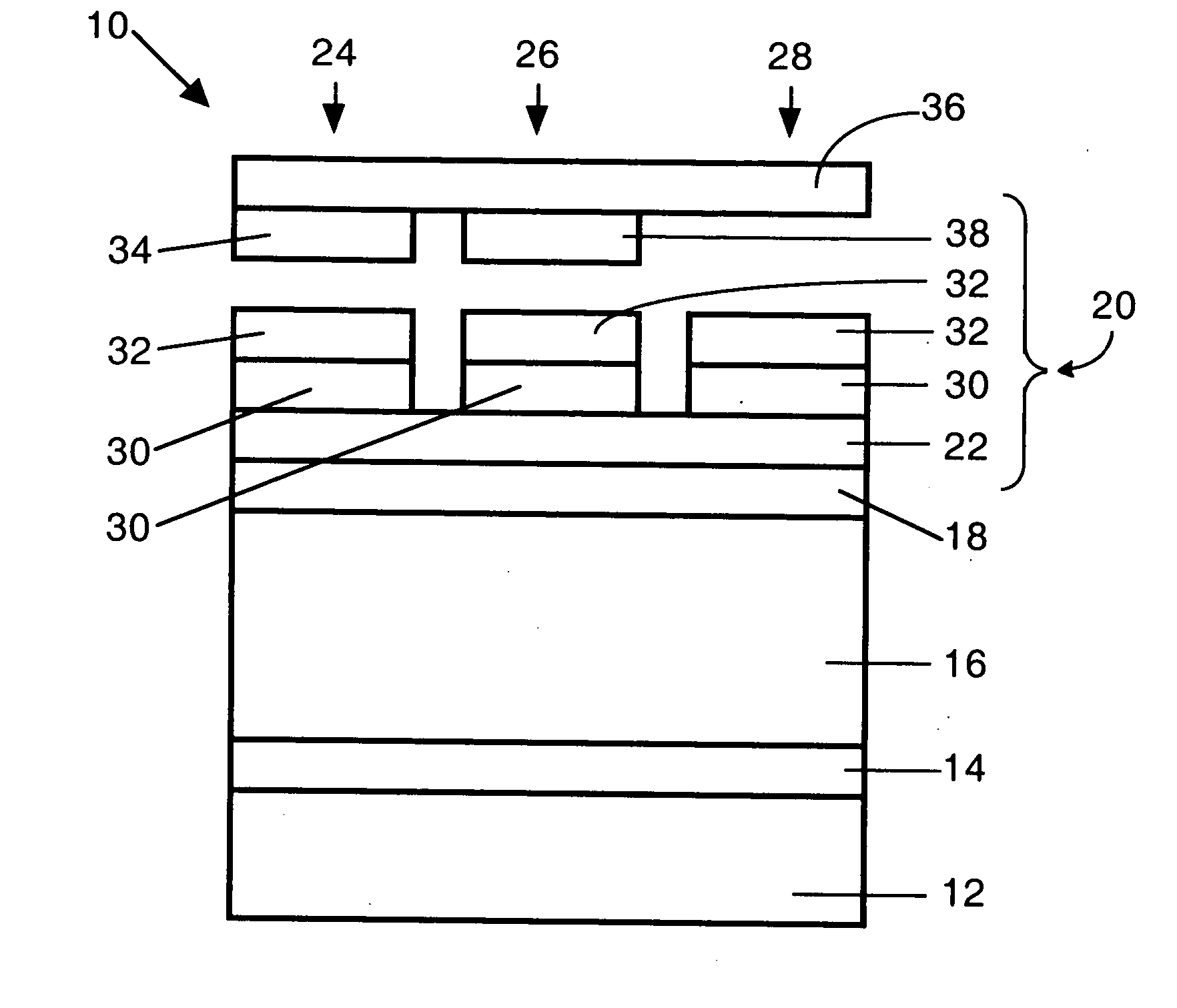Color electroluminescent displays
- Summary
- Abstract
- Description
- Claims
- Application Information
AI Technical Summary
Benefits of technology
Problems solved by technology
Method used
Image
Examples
example 1
[0134] A blue-emitting electroluminescent pixel having a europium activated barium thioaluminate phosphor film was fabricated on a 5 centimeter (length).times.5 centimeter (width).times.1 millimeter (thick) alumina substrate fabricated using the methods as described in Applicant's co-pending International Patent Application PCT / CA03 / 00568 filed Apr. 17, 2003 (the disclosure of which is incorporated herein in its entirety). The pixel was operated with repetitive alternating polarity 32 microsecond wide square-wave pulses and a frequency of 120 Hz giving 240 light pulses per second. The pulse amplitude was varied. in increments of 10 volts up to 260 volts. The luminance as a function of voltage indicates a luminance at 60 volts above the threshold voltage of 100 to 150 candelas per square meter.
example 2
[0135] A solution of a green-emitting photoluminescent dye, ADS-085GE.TM. (American Dye Source Inc., Canada) was poured into a flat bottomed glass container that was placed over the pixel of Example 1. The dye solution was observed to brightly luminesce green.
example 3
[0136] A solution of a red-emitting photoluminescent dye, ADS-100RE.TM.(American Dye Source Inc., Canada) was deposited on a glass substrate and allowed to dry. It was placed with the dye layer facing the pixel of Example 1 and tested using the procedure described in Example 1. The dye was observed to brightly luminesce with a red color with no penetration of the blue exciting light through the dye.
PUM
| Property | Measurement | Unit |
|---|---|---|
| Thickness | aaaaa | aaaaa |
| Size | aaaaa | aaaaa |
| Thickness | aaaaa | aaaaa |
Abstract
Description
Claims
Application Information
 Login to view more
Login to view more - R&D Engineer
- R&D Manager
- IP Professional
- Industry Leading Data Capabilities
- Powerful AI technology
- Patent DNA Extraction
Browse by: Latest US Patents, China's latest patents, Technical Efficacy Thesaurus, Application Domain, Technology Topic.
© 2024 PatSnap. All rights reserved.Legal|Privacy policy|Modern Slavery Act Transparency Statement|Sitemap


